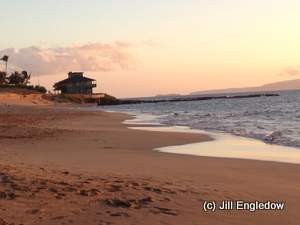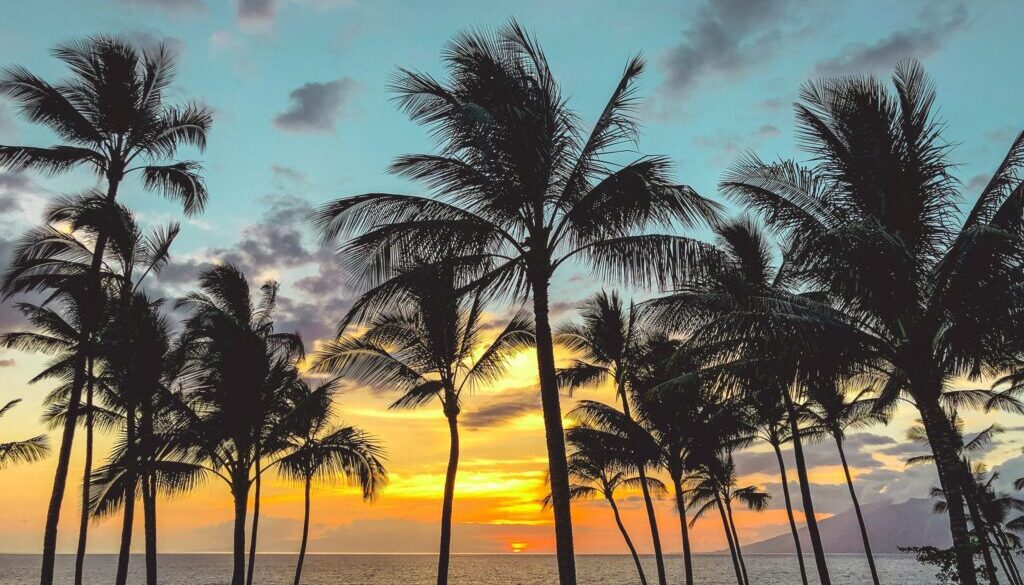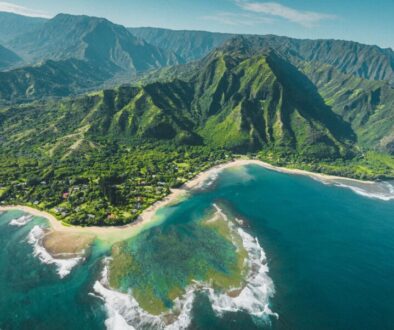Kihei History: A House Made Of Koa
An almost-forgotten chapter of Maui history centers on Kalepolepo, site of the ancient fishpond Ko`ie`ie and the whale sanctuary headquarters on a dune above it.
Kihei Fishing History
No one knows when the fishpond was built, but it was many centuries ago. According to a December 1921 article in Paradise of the Pacific by Charles Wilcox, “In building the sea walls men were stationed in long lines, passing stones by hand from the rocky sidehills miles away to the workmen laying the courses for the walls in the sea.” Today, volunteers with ‘Ao‘ao O Na Loko I‘a O Maui keep the fishpond walls intact.
Traditions
When Hawaiian scholar and minister David Malo moved to Kalepolepo in 1843, it was a trading village of some 2,000 inhabitants. Malo preached under the trees, summoning his congregation with a huge conch shell. Villagers built a church of stone and coral. Today the remains of that church are home to Trinity Episcopal Church by the Sea, and the church still has Malo’s conch shell.

Family Trees
In 1850, cabinetmaker John Joseph Halstead established a store on the beach at Kalepolepo, easily reached by sea captains and by farmers bringing produce from the uplands. Halstead was married to Uwaikikilani, the granddaughter of Isaac Davis, an early haole retainer of Kamehameha I who married the Hawai`i Island ali`i wahine Nakai. The Halsteads planned to take advantage of the demand by California gold miners for Kula produce, particularly Irish potatoes. He built a three-story house/store all of koa that would be one of the largest buildings on Maui. After California farmers began to grow food for the miners, and the potato boom ended, whaling captains and Maui shoppers continued to visit, and the Koa House remained a commercial and social center, sometimes entertaining Hawaiian royalty.
Natural Resources
“During the fifties Kalepolepo was not so barren looking a place,” according to Charles Wilcox, a member of the Halstead family. “Coconut trees and kou trees grew beside pools of clear water, along the banks of which grew the taro. . .” Today, the idea of fresh-water pools lined with taro is hard to imagine on a coastline that, without water pumped from Central Maui, would be a desert.
The springs that allowed people to live on this arid coastline dried up as rain-collecting forests above were destroyed by cattle, disease and over harvesting. When rain did fall on the denuded mountain, it was disastrous. “Torrential winter rains were washing down earth from the uplands, filling with the silt the ponds at Kalepolepo,” Wilcox wrote. “And cattle trampling down the brush and grass of the nearby fields caused sand dunes to drift, filling up the big Kalepolepo pond. . .”
The store closed in 1876, but the Koa House remained a landmark in the area. At last, in the 1940s, it had deteriorated so much that it was burned as a safety measure.
When I walk down to Kalepolepo, I imagine a wonderful house made of elegant koa near the fishpond, welcoming Upcountry farmers with vegetables to trade and watching the sea for ships from afar.




